This year, I’ve made a pledge, a resolution if you will, to take better care of my feet. I’ve been a distance runner for decades and also love to go to the gym, jump around and stand upright a lot of the day for my job. When it comes right down to it, my feet are the workhorses of my life and the very “sole” of my successes . . . and occasional failures. Makes sense, that if I take better care of my feet, my feet will take better care of me! 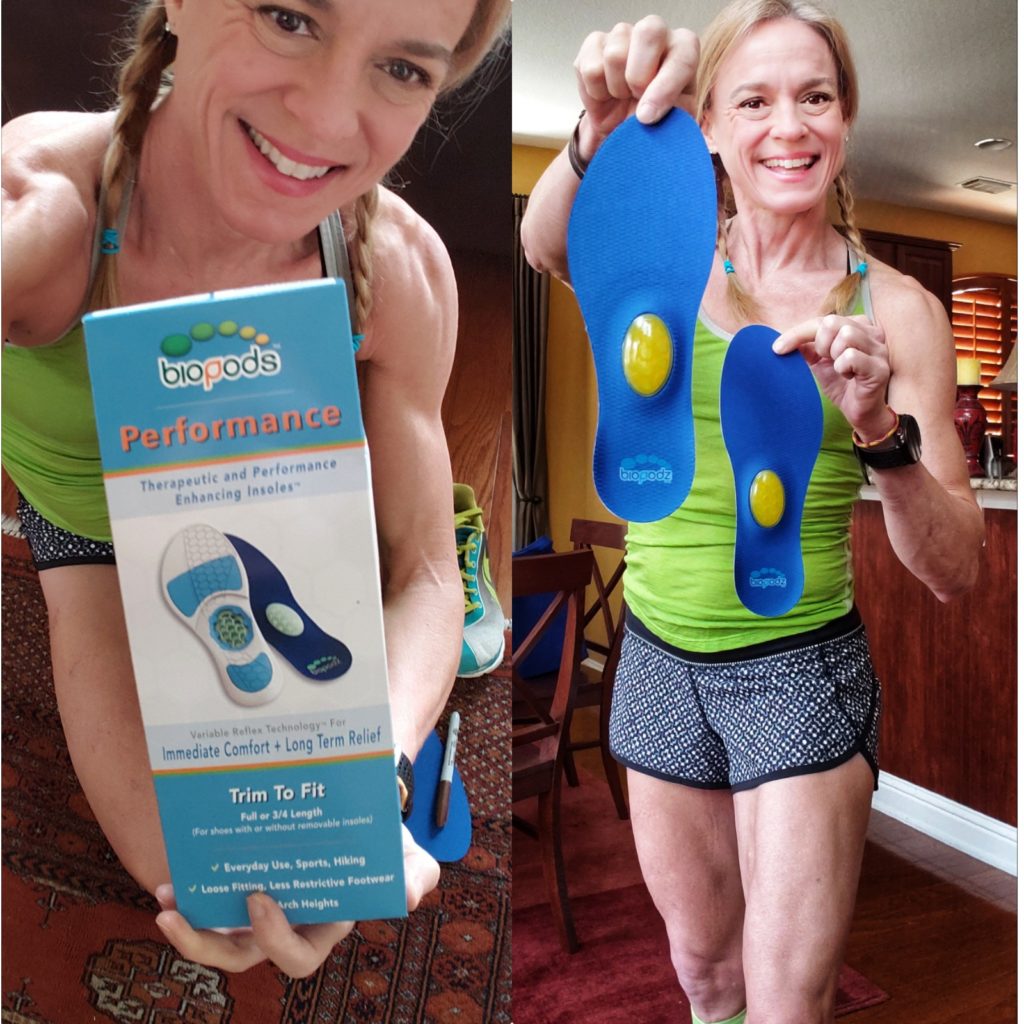
Read on to find out my resolutions for everyday foot care, Proven Ways Runners Can Treat Feet Better:
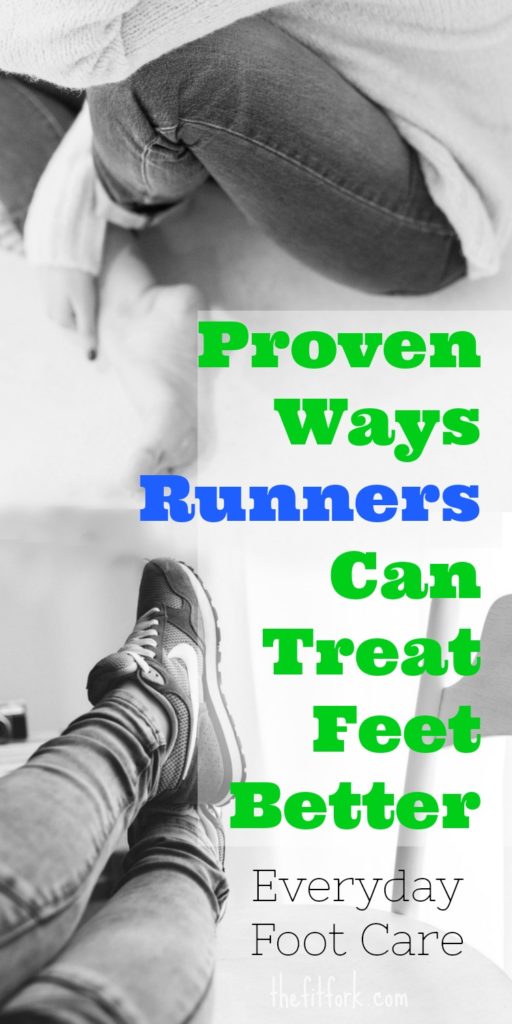
There are sooooo many things you can do to to improve your foot health as an athlete, before, during and after events. Today, I’m primarily focusing on foot health during your down time and active recovery, not necessarily what to do while you are out there battling it out on the course. As my grandma would say, an ounce of prevention is worth a pound of cure!
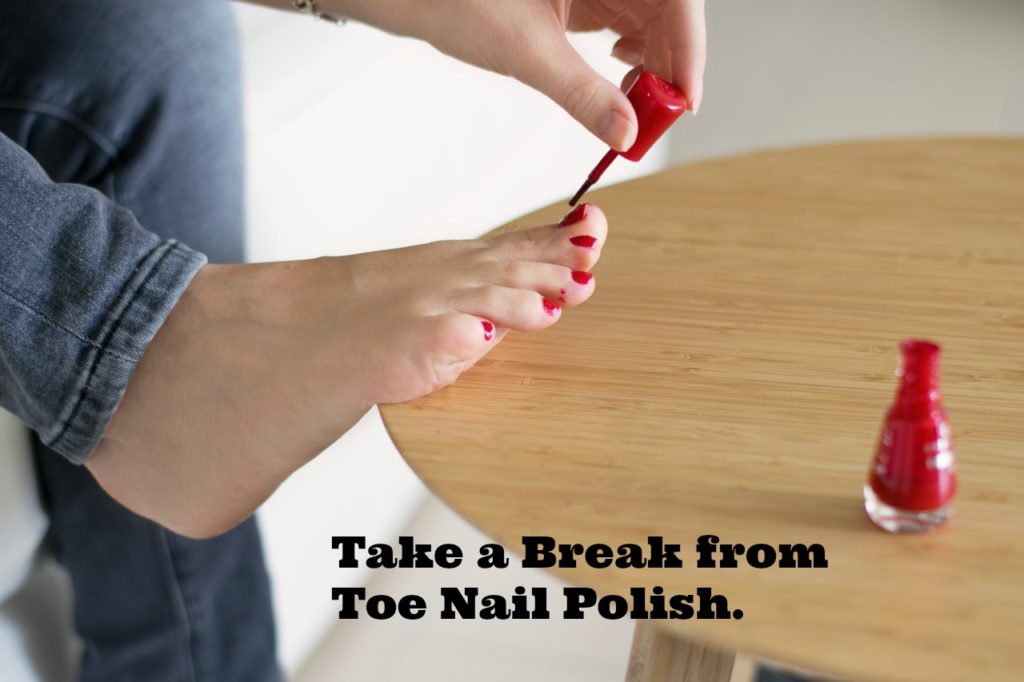 I will take breaks from toe nail polish: Apparently wearing toe nail polish to infinity is not a good idea for runner foot care, oops! As an endurance athlete who bares her toes frequently when not in running shoes, I have always, ALWAYS kept my toe nails painted. Fashion aside, my main reason for chronic toe nail painting was to hide the less than pristine condition and appearance of my nail — bruised and blackened from running, yellowed and brittle from neglect, and some are thick and uneven thanks to chronic damage and toe nail fungus (ewww). Polishes create an impermeable layer that keeps air from getting easily under nail bed and it has chemicals that promote discoloration and brittleness – all of these factors, along with the day-in-day-out demands on a runner’s feet can promote fungal growth (it’s a vicious cycle). Keeping toenails painted also disguises these potential issues that may need medical attention. My solution is to take a LONG break from polish for 3 months in the winter when I show my feet much less, and then in warmer weather, do my best to rotate through a week ON with polish, followed by a week OFF.
I will take breaks from toe nail polish: Apparently wearing toe nail polish to infinity is not a good idea for runner foot care, oops! As an endurance athlete who bares her toes frequently when not in running shoes, I have always, ALWAYS kept my toe nails painted. Fashion aside, my main reason for chronic toe nail painting was to hide the less than pristine condition and appearance of my nail — bruised and blackened from running, yellowed and brittle from neglect, and some are thick and uneven thanks to chronic damage and toe nail fungus (ewww). Polishes create an impermeable layer that keeps air from getting easily under nail bed and it has chemicals that promote discoloration and brittleness – all of these factors, along with the day-in-day-out demands on a runner’s feet can promote fungal growth (it’s a vicious cycle). Keeping toenails painted also disguises these potential issues that may need medical attention. My solution is to take a LONG break from polish for 3 months in the winter when I show my feet much less, and then in warmer weather, do my best to rotate through a week ON with polish, followed by a week OFF.
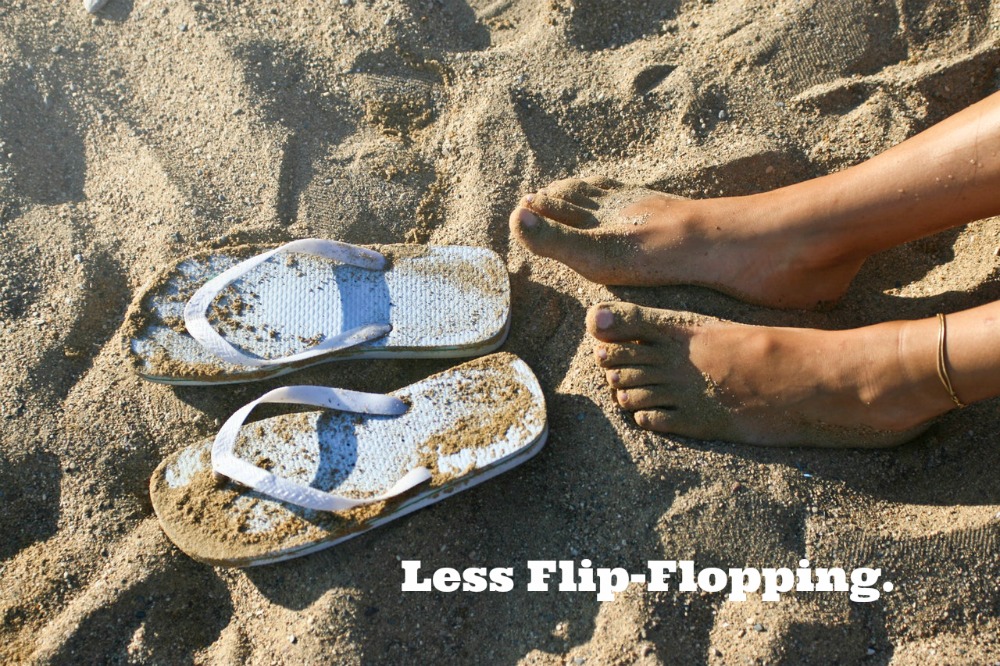
I will stop choosing flip-flops as my go-to shoe. Flip-flops (or cheap thong sandals) are the footwear of choice in my laid-back, warm-weather hometown. I have a zillion pairs, and I used to wear them to work, to play, when erranding and when basically doing anything other than running or going to the gym. However, experts say that flip flops don’t provide adequate shock absorption and can increase the demands on the ball of foot and heel. Over time . . .and when you least expect it, these persistent demands can trigger, heel pain, tendonitis, forefoot pain and even a stress fracture. So, buh-bye flip flops unless I’m lounging around the pool or showering at the gym to keep my healthy feet happy.
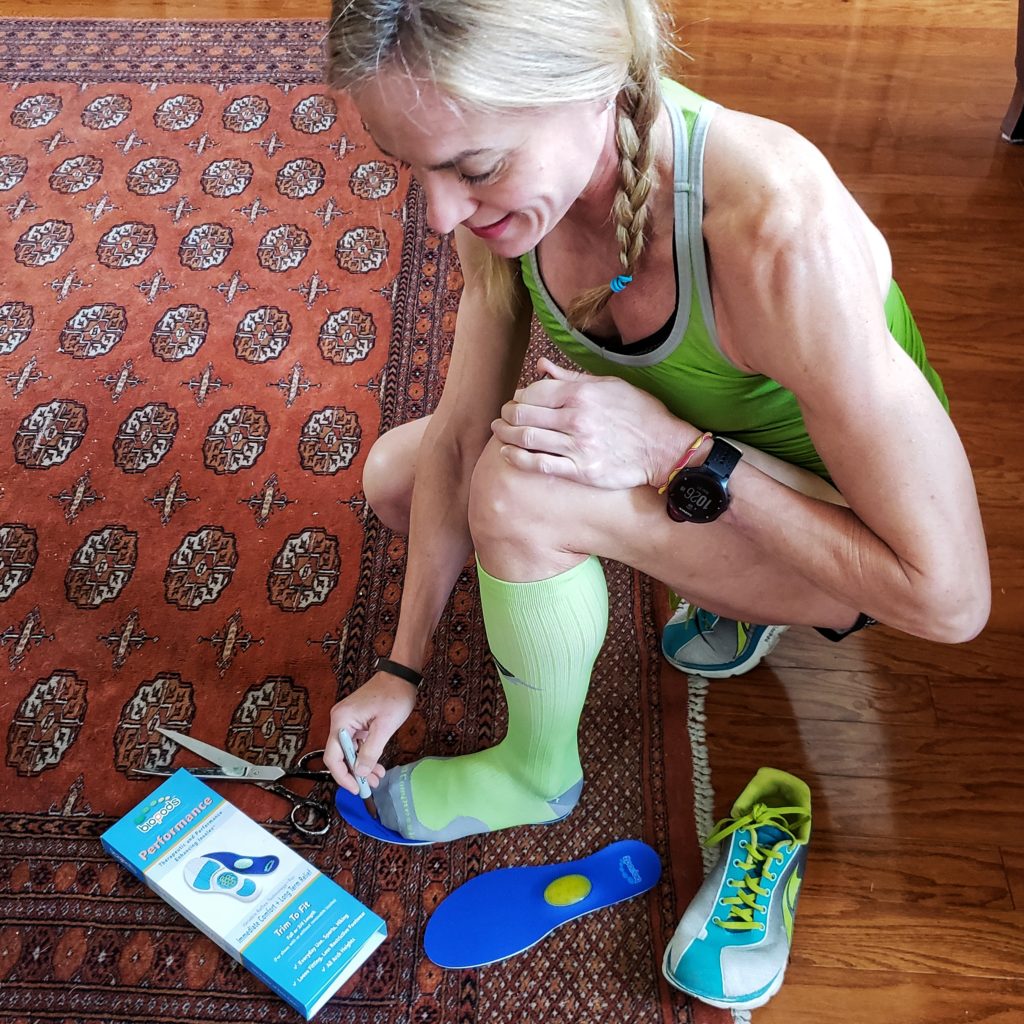
I will do a “Flat Shoe” redo. All these years, I knew high heels were bad for the body—throwing off the alignment and synergy between your back, knees, feet and even head (‘cause, if you’re anything like me, you’ll lose your balance and fall straight on your face). Recently, I learned I need to look through my closet and take a closer look-see at the flat shoes I schlep around in on colder or dressier days – like my flat canvas sneakers or ballet flats. Most of these flat shoes are ill-advised for healthy feet, they have absolutely no support and create the same undesirable issues as flip-flops and can also escalate the onset of foot fatigue.
However, it’s easy to “upgrade” my flat shoes with an insole, but not any ole drugstore insole. I’ve been using BioPods, a unique insole for healthy feet that provides stimulation to the arch rather than trying to fix the problem with artificial, dependence-creating support. The pods (seen right there in the middle of the insole) target my foot’s arch to create a springy stimulus that gradually increases over time to retrain my protective reflex functions from feet, legs, hips and back.
I will pro-actively treat my calluses. Calluses, yup, I’ve got them in spades and when they get out of control, what started out as a little protective help from my body, turns into a pressure point of pain. As a forefoot striker, I am prone to plantar calluses on the ball of my foot. Instead ignoring these little buggars until the point where I just CAN’T, I’ve started to get them under control once or twice a week by soaking feet in warm water for 10 minutes, using a file to “sand” them down, and then softening with a liberal application of cream with Salicylic acid before going to bed. This is so great for runner foot care and healthy feet.
Also, using the BioPods insoles I previously mentioned in my shoes during the day has been part of my everyday foot care routine and helping me to relieve some of the pressure in problem areas during my routine activities.
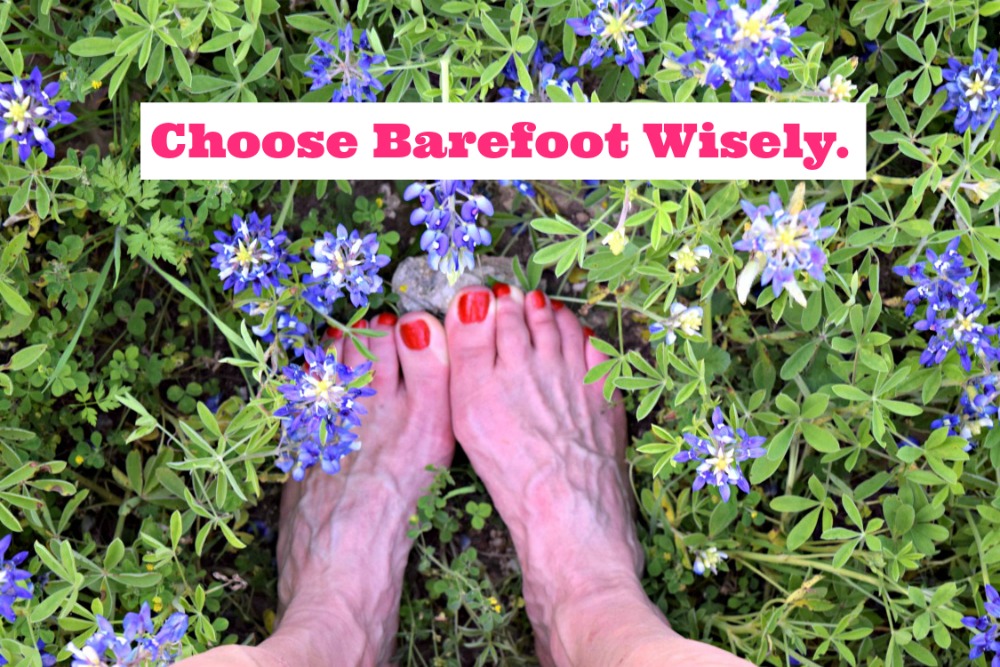
I will be smart about when I go barefoot. Normally, I would say that being barefoot is the best – it’s the natural state of your body and encourages the movements and feedback needed to stay foot healthy. For example, it’s beneficial to walk around barefoot on sand and soft grass. But I recently found out that, as you age (especially women), hormonal changes can lessen the fat pad on your foot that serves as a natural cushion. Maybe this can explain some of the pesky discomfort I have sometimes just walking from room to room on the hardwood and tile floors at home. Wearing casual indoor shoes or slippers inserted with my BioPods offers me some protection in a good way – instead of being a crutch to prevent foot pain, the inserts offer healthy “work” for my foot to do, similar to biofeedback that going barefoot creates.
Want to Learn More?: Check out BioPods to find a model that’s perfect for to promote healthy feet for any lifestyle. Each of the three BioPods models, designed by foot-function specialists, provides a different stimulus intensity to match the activity or sport for which you’ll use it. They can be inserted full-length into roomier gym and running shoes or trimmed ¾ length to fit in dressier shoes… and even high heels, if you must (and sometimes we must)! I’ve worn my VRT 200 Performance Pod (medium stimulus) in both running shoes, casual athleisure shoes (ahem, my Converse Chucks), and super light-weight ballet-type flats. They were easy to use and non-intrusive— once I got going, I quickly forgot I was using the unique insole. I did my thing, while the BioPods did theirs – provide ongoing feedback to the 10,000 sensory receptors in my feet! All this “action” helps retrain my reflexes and optimize my body mechanics so I can enjoy pain-free motion in my running and daily activities.
What is your biggest foot complaint as a runner? What are your foot health tips? Please share in the comments – XOXO, Jennifer
Disclaimer: This post is sponsored by BioPods, however all opinions, comments and enthusiasm about the product remain my own.

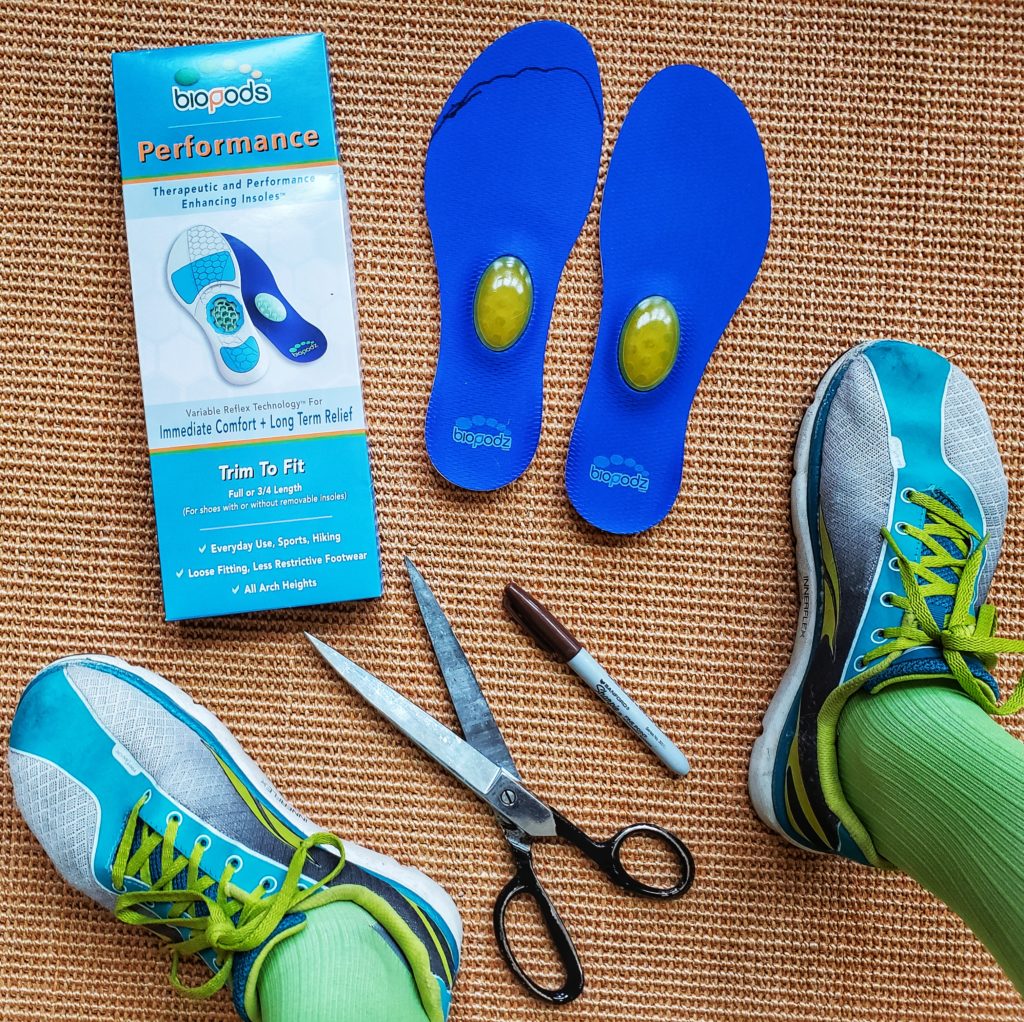
I’ve had plantar fasciitis twice and think I will try these for relief!
It’s so darn pesky! These are a great way to treat your feet better . . . and sneak in a little “foot work”
Can’t wait to buy these they sound wonderful and I trust you
Ohhh thanks for the confidence xoxo — but seriously, nice to have an insole that makes your foot “work” a little to get stronger